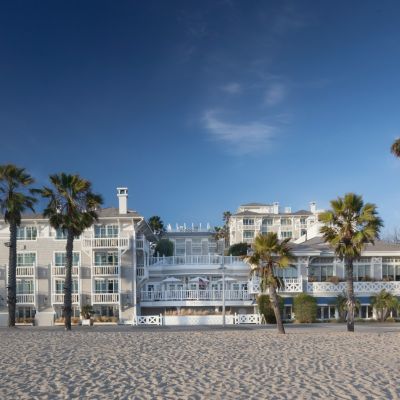Why This Billionaire Just Bought Hong Kong's Oldest Theatre

Adrian Cheng acquired Hong Kong’s last surviving movie palace, the 68-year-old post-war State Theatre, to preserve it.

New World Development (NWD), the property development arm of the billionaire Cheng family, is in the process of buying the derelict icon for HK$4.77 billion (US$610 million). The building is known for its parabolic exoskeleton truss and mural relief, which NWD will preserve and transform into a landmark steeped in cinematic culture.
The 68-year-old Grade I historic site in North Point, Hong Kong, first opened in 1952 and is the oldest movie palace in Hong Kong.
Adrian Cheng, CEO of New World Development, said: “Following last year’s launch of our art and design district Victoria Dockside, we are delighted to embark on another transformation project that is historically and architecturally significant to Asia. The State Theatre is one of the last standing cultural icons of Hong Kong and together with our international team, we will do our best to conserve and restore this iconic building to its original glamour and build a cultural oasis that serves the community.”

The cinema building, jointly designed by architects Liu Sun-fo and George W. Grey, first opened in 1952 as the Empire Theatre, and was renamed State Theatre in 1959. The State Theatre played an instrumental role in bringing arts and culture to the public at a time when there was a lack of large-scale cultural event venues. It was the first in Hong Kong to host live world-class theatrical and musical performances, by the likes of renowned tenor Peter Pears and violinist Isaac Stern, as well as international film screenings.
Spearheaded by Harry Oscar Odell, the late Russian Jewish businessman and impresario, the original 1,300-seat theatre, with a 56-foot cinema screen, also had a pivotal role in Hong Kong’s booming entertainment industry in the 1970s and 1980s when it was Asia’s movie capital, producing over 300 films per year.
Most significant of all perhaps, is its architectural style, exemplary of the post-war Modern movement architecture in the city. The State Theatre's parabolic exoskeleton truss supports the entire structure. This reinforced concrete arch beam roof and its vertical hangars, which suspend a concrete paneled roof over the auditorium, were and remain unique to Hong Kong’s cityscape.
The iconic curvature of the roof also doubled as a natural amplifier and sound isolator, creating superior acoustics that isolate external sounds and vibration from the main auditorium. Due to its architectural, contextual and historic values, the State Theatre was listed as a Grade I Historic Building by the city’s Antiquities and Monuments Office in 2017.
The State Theatre also features a distinctive curved façade with a relief mural by late contemporary Chinese artist Mei Yutian, as well as small square windows with projecting concrete frames that are typical of the 1950s Modernist architecture.
Preserving Cultural Heritage
Having survived a fire in 1995, parts of the State Theatre are derelict and the theatre itself was turned into a snooker hall until earlier this year. In order to save the dilapidated cultural icon and preserve Hong Kong’s last surviving movie palace, Cheng assembled a team of local and international consultants with experience in heritage conservation.
Leading the team are British firms WilkinsonEyre and Purcell – who worked on the Gasholders London redevelopment scheme and the restoration of Tai Kwun, the former Central Police Station Compound in Hong Kong, respectively – as well as Hong Kong-based AGC Design, who took part in the revitalisation of Lui Seng Chun, a 89-year-old house in Hong Kong, restored as a Chinese Medicine Centre.
Brian Anderson, Director of Cultural Heritage at Purcell, said: “State Theatre in North Point, Hong Kong is a rare survival from the early post-war years, when performance art was extending its global reach to enrich the culture of ordinary people. This programme of sensitive and considered adaptation will liberate the building to become the visual and cultural focus of ‘Little Shanghai’ once again.”
In addition to the conservation and development plan, the group has begun to collect relics and memorabilia of the State Theatre. Its conservation team has also initiated a systematic documentation of its oral history. About 100 artefacts related to the State Theatre and the North Point area (known as ‘Little Shanghai’) have been collected thus far, including components of its projectors, the theatre billboard, screening contracts and more. These items will be curated and displayed in the future State Theatre, where the public will be able to enjoy cultural activities, such as guided heritage and culture tours, as part of the conservation plan.








